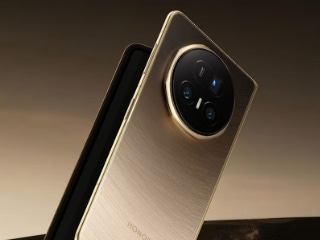- Home
- Smart home
- Smart home News
- Millions of IoT Devices Exposed to Hacking Due to Amnesia:33 Vulnerability, Research Shows
Millions of IoT Devices Exposed to Hacking Due to Amnesia:33 Vulnerability, Research Shows
Potentially affected devices from an estimated 150 manufacturers range from smart plugs and printers to healthcare appliances.

The company discovered the vulnerabilities in the largest study ever on the security of TCP/IP software
Researchers at a cybersecurity firm say they have identified vulnerabilities in software widely used by millions of connected devices — flaws that could be exploited by hackers to penetrate business and home computer networks and disrupt them.
There is no evidence of any intrusions that made use of these vulnerabilities. But their existence in data-communications software central to Internet-connected devices prompted the US Cybersecurity and Infrastructure Security Agency to flag the issue in an advisory.
Potentially affected devices from an estimated 150 manufacturers range from networked thermometers to “smart” plugs and printers to office routers and healthcare appliances to components of industrial control systems, the cybersecurity firm Forescout Technologies said in a report released Tuesday. Most affected are consumer devices including remote-controlled temperature sensors and cameras, it said.
In the worst case, control systems that drive "critical services to society" such as water, power and automated building management could be crippled, said Awais Rashid, a computer scientist at Bristol University in Britain who reviewed the Forescout findings.
In its advisory, CISA recommended defensive measures to minimise the risk of hacking. In particular, it said industrial control systems should not be accessible from the internet and should be isolated from corporate networks.
The discovery highlights the dangers that cybersecurity experts often find in Internet-linked appliances designed without much attention to security. Sloppy programming by developers is the main issue in this case, Rashid said.
Addressing the problems, estimated to afflict millions of devices, is particularly complicated because they reside in so-called open-source software, code freely distributed for use and further modification. In this case, the issue involves fundamental internet software that manages communications via a technology called TCP/IP.
Fixing the vulnerabilities in impacted devices is particularly complicated because open-source software isn't owned by anyone, said Elisa Costante, Forescout's vice president of research. Such code is often maintained by volunteers. Some of the vulnerable TCP/IP code is two decades old; some of it is no longer supported, Costante added.
It is up to the device manufacturers themselves to patch the flaws and some may not bother given the time and expense required, she said. Some of the compromised code is embedded in a component from a supplier — and if no one documented that, no one may even know it's there.
“The biggest challenge comes in finding out what you've got,” Rashid said.
If unfixed, the vulnerabilities could leave corporate networks open to crippling denial-of-service attacks, ransomware delivery or malware that hijacks devices and enlists them in zombie botnets, the researchers said. With so many people working from home during the pandemic, home networks could be compromised and used as channels into corporate networks through remote-access connections.
Forescout notified as many vendors as it could about the vulnerabilities, which it dubbed AMNESIA:33. But it was impossible to identify all affected devices, Costante said. The company also alerted U.S., German and Japanese computer security authorities, she said.
The company discovered the vulnerabilities in what it called the largest study ever on the security of TCP/IP software, a year-long effort it called Project Memoria.
Are Micromax In 1b, In Note 1 good enough to take the brand to the top in India?? We discussed this on Orbital, our weekly technology podcast, which you can subscribe to via Apple Podcasts, Google Podcasts, or RSS, download the episode, or just hit the play button below.
Get your daily dose of tech news, reviews, and insights, in under 80 characters on Gadgets 360 Turbo. Connect with fellow tech lovers on our Forum. Follow us on X, Facebook, WhatsApp, Threads and Google News for instant updates. Catch all the action on our YouTube channel.
Related Stories
- Samsung Galaxy Unpacked 2025
- ChatGPT
- Redmi Note 14 Pro+
- iPhone 16
- Apple Vision Pro
- Oneplus 12
- OnePlus Nord CE 3 Lite 5G
- iPhone 13
- Xiaomi 14 Pro
- Oppo Find N3
- Tecno Spark Go (2023)
- Realme V30
- Best Phones Under 25000
- Samsung Galaxy S24 Series
- Cryptocurrency
- iQoo 12
- Samsung Galaxy S24 Ultra
- Giottus
- Samsung Galaxy Z Flip 5
- Apple 'Scary Fast'
- Housefull 5
- GoPro Hero 12 Black Review
- Invincible Season 2
- JioGlass
- HD Ready TV
- Laptop Under 50000
- Smartwatch Under 10000
- Latest Mobile Phones
- Compare Phones
- OnePlus 15R
- Realme Narzo 90x 5G
- Realme Narzo 90 5G
- Vivo S50 Pro Mini
- Vivo S50
- OPPO Reno 15c
- Redmi Note 15 5G
- Redmi Note 15 Pro 5G
- Asus ProArt P16
- MacBook Pro 14-inch (M5, 2025)
- Infinix Xpad Edge
- OnePlus Pad Go 2
- OnePlus Watch Lite
- Just Corseca Skywatch Pro
- Acerpure Nitro Z Series 100-inch QLED TV
- Samsung 43 Inch LED Ultra HD (4K) Smart TV (UA43UE81AFULXL)
- Asus ROG Ally
- Nintendo Switch Lite
- Haier 1.6 Ton 5 Star Inverter Split AC (HSU19G-MZAID5BN-INV)
- Haier 1.6 Ton 5 Star Inverter Split AC (HSU19G-MZAIM5BN-INV)

















